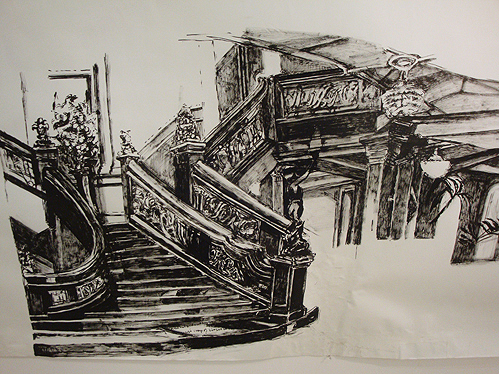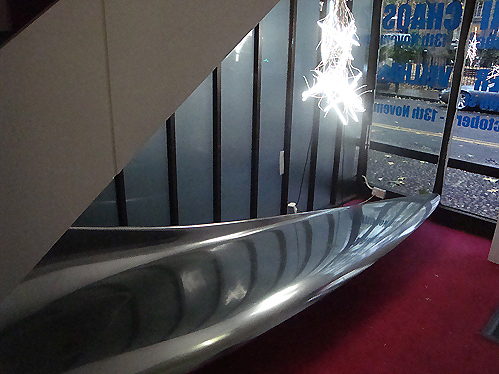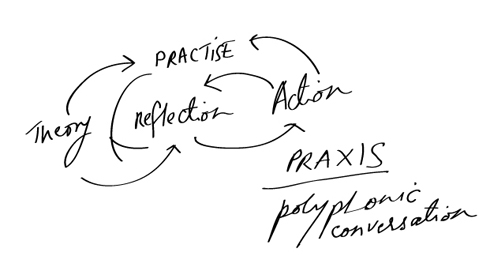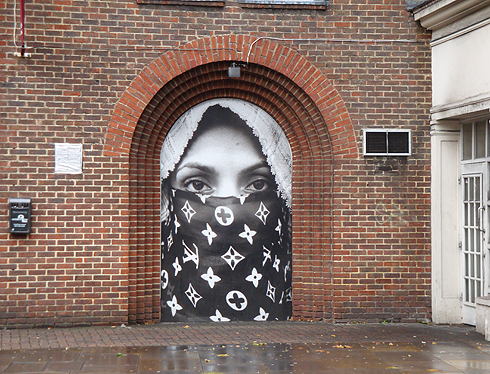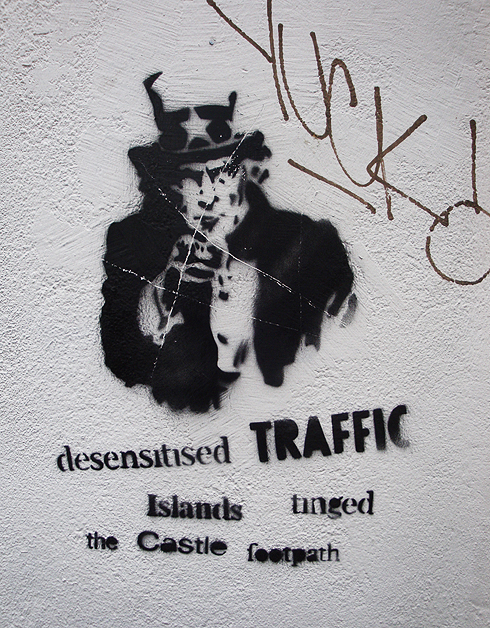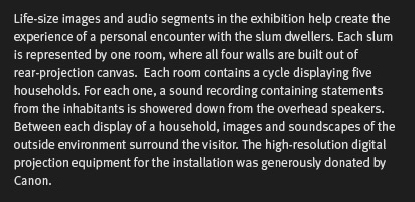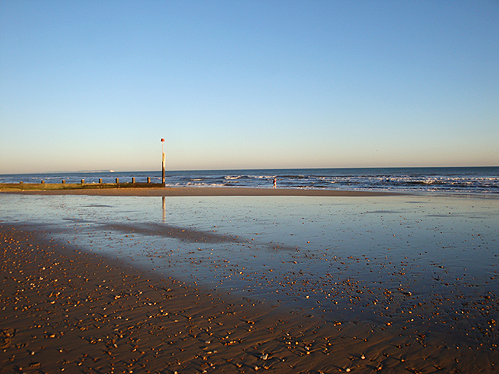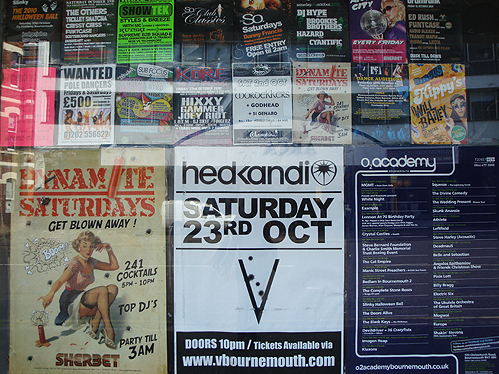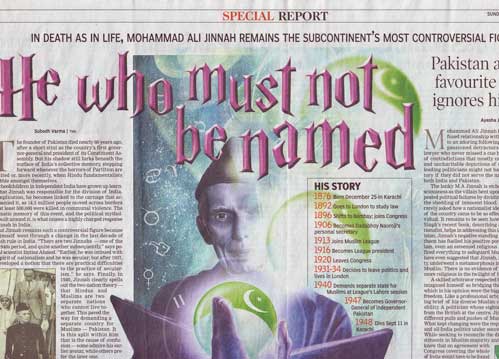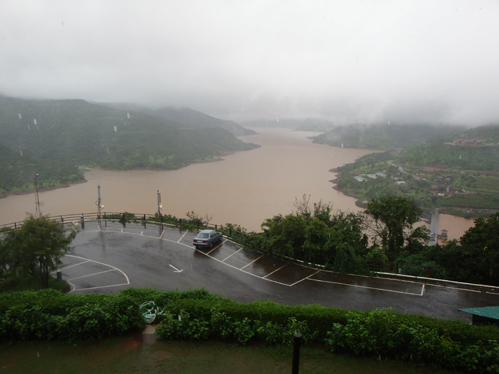Gallery Hopping
 Heavenly Creatures, Group exhibition curated by Artnesia, The Aubin Gallery, 4th Nov. to 24th Dec. 2010.
Heavenly Creatures, Group exhibition curated by Artnesia, The Aubin Gallery, 4th Nov. to 24th Dec. 2010.
Hot Chocolate, 2009 by Appau Junior Boakye-Yiadom (Ghana, 1983). Porcelain cat, fireplace DVD, TV monitor, dark chocolate; Variable Size. Heavenly Creatures exhibition at the Aubin Gallery.
Flowers that bloom tomorrow by Yayoi Kusama, presented by Victoria Miro. 7th Oct to 13th Nov. 2010.
Story of Rice Installation of neon lights in a circular formation (8 words), 2006 Edition of 3. Partially visible is Story of Rice Installation of neon lights (33 characters) on angled wooden sheld, 2006. Edition of 3. Utopia on the Horizon by Suki Chan, TinType Gallery, 11th Nov. to 18th Dec. 2010.
Art by unknown person near the entrance of Hales Gallery, London.
First Class (A Night to Remember, 1958). Still Life by Dawn Clements, Hales Gallery, 22nd Oct to 20th Nov. 10 meter drawing weaves multiple edited scenes from the film a Night to Remember (1958).
Installation by unknown artist at the entrance of Archichaos exhibition, Artstanding.
Unstructured Body by Tiphaine De Bodman, 2010. Archichaos, Curated by Julia Van Hagen/Artstanding.
Archichaos Exhibition, ArtStanding, 14th Oct to 13th Nov. 2010.
The Other Side 24th Sept. 2010. No. 18, The Independent, by Damian Ortega. A selection of outcomes in reaction to the news from 19.08 to 27.09/10.
Detail.
Detail, the Independent by Damian Ortega
Mumbai sketch
A video sketch of the virtual city skyline: it includes several buildings which are landmarks (India Gate and Taj Mahal Palace), or are about to be built (Imperial Towers). Still in the process of illustrating people, details, events, and deciding which parts of the skyline are most symbolic. The sky is in small animated pieces, however am still exploring colours and time of day.
Pier Stockholm
Pier Stockholm: Born in Peru, works and lives in Paris. "Pier Stockholm re-creates chaos in an apparent aesthetically ordered manner" (Julia Van Hagen, ArtStanding. Oct. 2010).

Drawings. Indian Ink & glass paint on paper vegetal. 2008 Visit image source
Detail: Metal by Pier Stockholm.
The theme of chaos vs. order is an important aspect of the Mumbai panorama's and I intend to explore it in some detail.
Kolkoz
I saw this work at the ArchiChaos Exhibition in London (14th Oct to 13th Nov, Curated by Julia Van Hagen/Artstanding). "The exhibition 'ARCHICHAOS' demonstrates the notion of architecture and chaos. Each artist's work included in this project reflects upon the notion of architecture, nature and society."
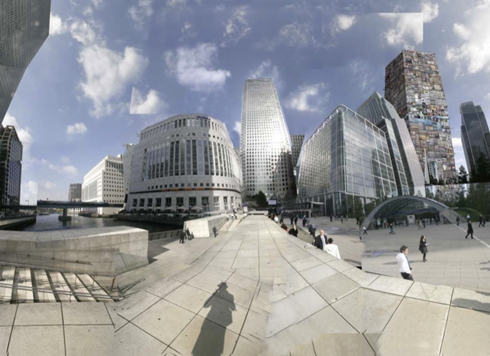
"Kolkoz Tower, London, Canary Wharf Station View" 2008 Photograph, aluminum, framing / Photographie, aluminium, encadrement 49 1/4 x 67 x 1 1/4 inches / 125 x 172,2 x 3,2 cm 1/5 + 2AP Courtesy: Galerie Perrotin, Paris
It is also relevant at this point to connect this work with Muybridge's panorama of San Francisco; which I had mentioned earlier as an important influence in creating a digital panorama of Mumbai.
27th Dec. 2010 Update: Kolkoz uses pieces of photographs to "construct" the blue sky in the above work, which in turn influenced my own practice. I used a similar method to construct a sky with pieces of video footage.
Sally Mackey: Practice as Research
My notes from the talk by Sally Mackey : Key questions: the key questions of your research are a work in progress as you evolve through the project: PROCESS driven. The importance of process (rigor and significance) versus the final product (as in the final product cannot stand on it's own).
Laboratory : creating a set up to enquire into your key questions.
Dissemination of research: Can an artwork disseminate knowledge (your research) on its own without an abstract? This is especially important in temporary art - or 'ephemerality of performance'. Peer Review: The importance of getting published, that is, other people (relevant to the field) should comment on your work, write about it, so that it is acknowledged as practice as research. These are all outcomes, ways to disseminate (DVD, websites, papers, articles, reviews, etc.)
Complimentary Annotation (documentation): Photos, bits of material, video clips, notes, etc.
Brick Lane and London
My first real trip to London (I feel like such a tourist): it was only a day but we covered quite a bit, bravely braving the wind and rain to see as many art shows and galleries we could within a day. And we successfully covered at least ten, I think, popping in and out of the tube and walking and walking...

Camille Utterback
Her series of intallations called Liquid Time interested me because of the use of videos from urban cities across the world, and how the factor of time changes in relation to the user's movement around the space. She says: The interactive medium provides a rich environment to explore the connections between physical bodies and the myriad of representational systems possible in the digital realm. Physical-digital interfaces – ranging from the familiar mouse and keyboard to more unusual sensing systems – provide the connective tissue between our bodies and the codes represented in our machines. I take these interfaces as both a practical and conceptual artistic challenge. Interactive systems determine the grammar of our interaction with digital media, and ultimately its possibility for meaning.
[vimeo http://www.vimeo.com/13110364]
The Elsewhere
The song-site in Bollywood movies is a good example of the imagined elsewhere for middle and upper-middle class Mumbaikars, where we are suddenly transported from the streets of Mumbai or the here, into an ideal place frequently represented by Switzerland, New Zealand or Germany; a dreamscape that is actually being built (Fig.1) through the efforts of architects and builders who have realized and understood this desire amongst aspiring Indians (Ashraf, 2005, p. 68):
The longing for elsewhere is now embodied in new building configurations that are radically altering the urban landscape: malls and shopping centres, cineplexes and flyovers, and exclusive apartment or residential complexes.
Using popular commercial styles of architects such as Hiranandani and Hafeez Contractor, the elsewhere will be a seamless city inspired by exclusive residential complexes and sets from Bollywood movies.
A complete contrast to these new structures that boast luxury, the reality or the here is that two-thirds of Mumbai’s population live in slums that lack basic amenities such as water, health, education and sanitation (Jonas Bendikson, 2008). This is how the majority lives even as they aspire to the ‘elsewhere;’ consuming popular Bollywood movies that sell dream-like images of what India could be. The here will be represented by a fragmented collage of conflicting identities in Mumbai today, a panorama based on images of everyday streets, slums, art deco buildings and famous landmarks.
[The full essay with references and images is available here: Study_PlanFNL5]
The Places We Live
The website is an interactive multimedia presentation of how people live in urban slums. Dharavi is represented with a combination of interactive space, photographs, stories, and sound. I saw this about one or two years ago, and now that I am finally in a position to spend time researching my city, I remember how much this spoke to me. It manages to articulate, to some extent, what it is like to live in the slums of Mumbai. Although I have never lived in a slum, the use of everyday street sound is haunting and familiar, nostalgic now that I am not living in Mumbai.

The exhibition and website are based on Jonas Bendikson's documentation of how people live in slums around the world The exhibition was first put up in 2008:
Research: its Aims and Structure
Phil Jones spoke about his thesis 'The Bones of the Book: Schematic Structure and Meanings made from from Books' and it lead me to question my Study Plan immediately. It is only a synopsis right now, but in time I should be confident of where my research stands in the academic world. These are some pointers from Phil on how to structure your research, in my own words: > The Subject This is the underlying aim, drive or motivation behind my work.
> The Field What is the state of interactive media today? What is the most current research and art in this field, and how and in which direction is it moving towards. What are the factions etc.
> Research Question Specifying the focus of the study using relevant technical terms from my discipline, in a question format. Aim, Objectives (Detailed aim) will flow from the research question.
> Theoretical Context World view, philosophical point of view, which will then influence your practice, awareness.
> Methods Connected to your theoretical framework.
> Claims and Truths Provably true, probably true (statistics) or plausibly true (convincing argument)
> Prediction of the form of the final presentation
Explication
Or making the implicit, explicit. That was the goal when writing my plan for phase 1 of the MA project. What I achieved though was a brief overview of the project's main aims as they stand now, and how I plan to accomplish them within the given time period: My aim is to create an interactive experience or object that represents a slice of the city Mumbai. Using visual language that symbolically represents the city’s dichotomies and conflicting identities, I propose to explore the city’s depth and complexity through the combined use of an appropriate form language, relevant technology and multimedia.
Download the full PDF here: Study_Plan (2.5 MB)
London Exhibitions
My first trip to Tate Britain and the V&A: Looking at a wide variety of artists from Fiona Banner, Muybridge and Mondrian to Rachel Whitereed.
My visit to Tate Britain and the V&A in London was helpful in several ways. First off, Fiona Banner's work Harriet and Jaguar made a huge impact on me. The fighter jets looked beautiful and awe inspiring, especially because of the way they were placed in the museum gallery. In a way she has transformed them so that it's difficult to remember that these are deadly machines: war planes used to kill people.

Another image from Fiona Banner called Top Gun (1994), this is a close-up I've taken. It interested me because of the way it pulls you in and persuades you to read more.
Inverse Reverse Perverse (1996) by Cerith Wyn Evans at the Tate, London
Inversions (1966) by Mary Martin
Structure 14c (1961) by Stephen Gilbert, at the Tate London.
Of all the work by Eadward Muybridge that was exhibited, Panorama of San Francisco from Street Hill (1878) was the one that came closest to affecting my practice as an artist. The idea of a landscape or panorama of the city of Mumbai had been churning in my head for a while, and experiencing this work at this scale helped me focus on the concept as a method of depicting a rich space. The landscape format reveals more of the city than what is seen normally, or parts of the city like they have never been seen before; a disillusioned and yet enlightened reinterpretation of a physical urban space. I will explore the landscape format in more detail in a later post.
Update (8th Dec): Photo documentation of more exhibitions I've visisted here.
Mind Map
I had so many ideas, theories and directions I wanted to explore that a good old fashioned brainstorming was the only way to start.
Trying to pin down what exactly this MA thesis is going to about is no easy task. I had so many ideas, theories and directions I wanted to explore that a good old fashioned brainstorming was the only way to start. Check out it out here.

Bournemouth
My first few glimpses of the streets nearby. Suddenly the importance of weather forecasts has trebled, because it could mean the difference between freezing and sort of bearable (for me). In Bombay there's no need to check the weather because the temperature varies between 25-36 degree C throughout year, and during the monsoons it rains everyday.
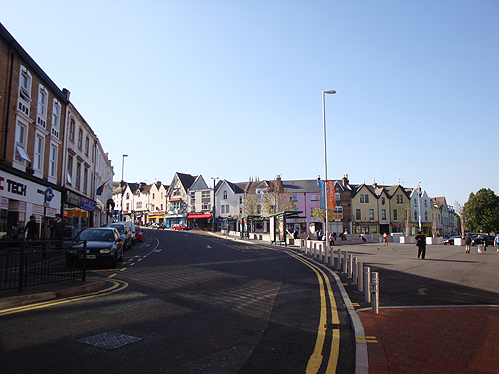
Jinnah as Voldemort
The Indian print media is at times nothing more than a collection of titillating and shallow reports of what they think readers want to read and too many advertisements. This took ridiculous proportions when the Times of India compared Jinnah to Voldemort. As a diehard Harry Potter fan I found this hilarious and mildly offensive. As a reader I found this severely disappointing because I was not reading a tabloid. I stopped taking such newspapers seriously after that, and now I depend on a combination of blogs, wikinews, and a few carefully chosen RSS feeds for balanced news reports. Jinnah was a politician and a lawyer, and the founder of Pakistan. The article was a poor attempt to cover an entire page with dribble about how Jinnah is blamed for the partition and everyone in India overreacts to the issue. I had to suffer through the article title "He who must not be named" and "Dark Lord of 1947? The role's been taken by 'you know who.'" And all because newspapers think this stuff is "news." I could try and deconstruct this as some twisted post-modernist example of media hype, but I will refrain.
Even more disturbing is the illustration where Jinnah is Voldemort with a ball of glowing Islam in his hand. Clearly anti-islamic.









